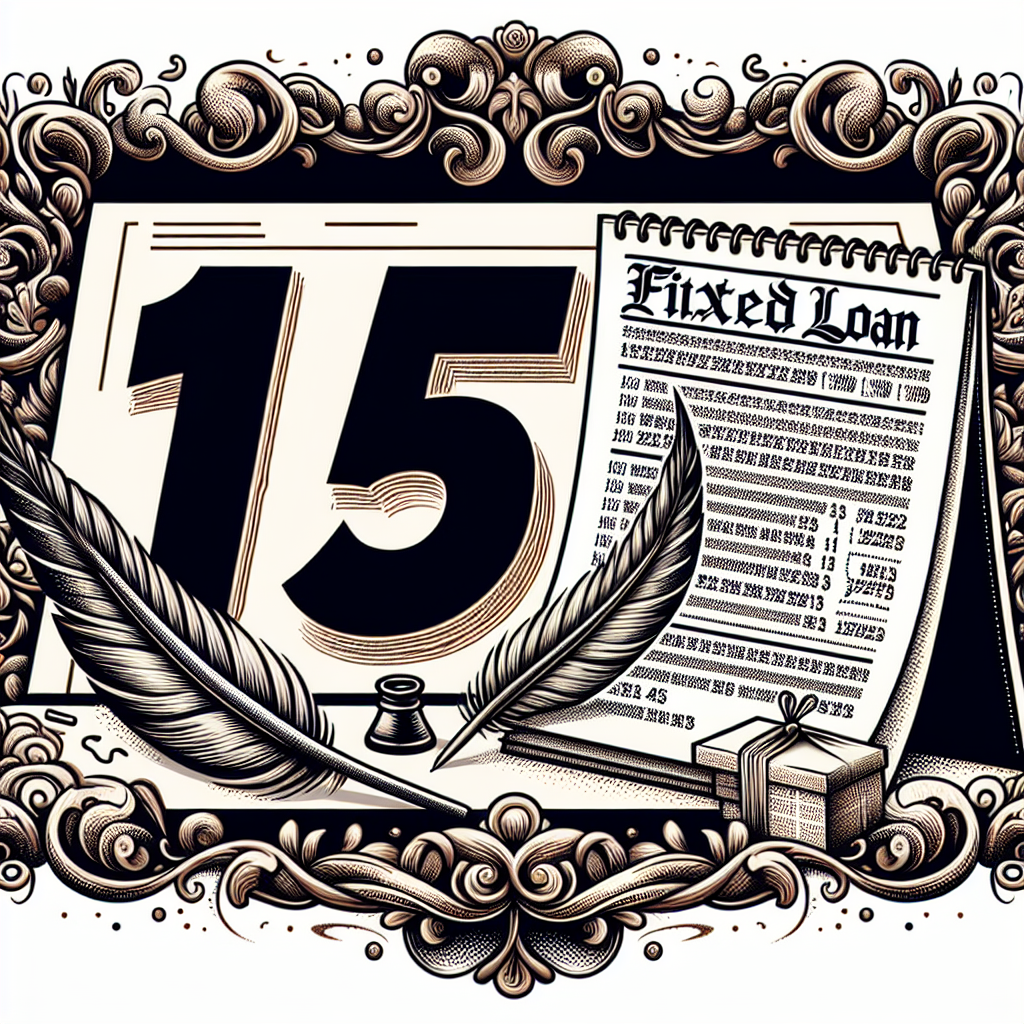
15 year fixed loan
Understanding the 15-Year Fixed Mortgage Loan
When it comes to financing a home, prospective homeowners often encounter various options, each with its own advantages and drawbacks. One popular choice among buyers is the **15-year fixed loan**, which is a type of mortgage that offers a fixed interest rate for a duration of 15 years. This article will explore the benefits, drawbacks, and overall suitability of 15-year fixed loans to help you make an informed decision for your home financing needs.
What is a 15-Year Fixed Loan?
A **15-year fixed loan** is a mortgage that is repaid in equal monthly installments over a period of 15 years. Unlike adjustable-rate mortgages (ARMs), which can fluctuate in interest rates, the fixed rate of a 15-year loan remains constant throughout the loan term. This stability can be appealing to many homeowners, as it helps create a predictable budget.
Advantages of a 15-Year Fixed Loan
Choosing a 15-year fixed loan comes with several advantages that may align with your financial goals:
- Lower Interest Rates: Typically, 15-year loans come with lower interest rates compared to their 30-year counterparts. This means you pay less money in interest over the life of the loan.
- Faster Equity Building: Because you're paying off the principal faster with a shorter loan term, you build equity in your home more quickly.
- Less Interest Paid Overall: Since the loan term is shorter, the total interest paid over the life of the loan is substantially less than on longer loan terms.
- Financial Freedom: Paying off your home in 15 years means you will own your property outright sooner, allowing for increased financial freedom and flexibility.
Disadvantages of a 15-Year Fixed Loan
Despite its advantages, a 15-year fixed loan is not suitable for everyone. Here are some potential drawbacks:
- Higher Monthly Payments: Since the term is shorter, the monthly payments on a 15-year loan are significantly higher than those of a 30-year loan, potentially straining your budget.
- Less Cash Flow: Higher monthly payments mean less disposable income for other financial goals, such as investing, saving for retirement, or enjoying lifestyle choices.
- Higher Qualification Standards: Lenders may impose stricter requirements on borrowers seeking a 15-year fixed loan, including a higher credit score and lower debt-to-income ratio.
Who Should Consider a 15-Year Fixed Loan?
Now that we've discussed the advantages and disadvantages of a **15-year fixed loan**, who should consider this type of mortgage? Here are some potential candidates:
- Those with Stable Incomes: Individuals with stable jobs and a consistent income may find it easier to manage the higher payments associated with a 15-year mortgage.
- Homebuyers Planning Long-Term: If you plan to stay in your home for the long term, paying it off sooner can save you money on interest and alleviate future housing costs.
- Those Focused on Financial Independence: If your goal is to eliminate debt and achieve financial independence quicker, a 15-year loan aligns well with that objective.
- Your Age Plays a Role: Younger buyers with a longer time horizon may benefit from the equity built quickly, while older individuals looking for stability might also find it appealing.
How to Evaluate a 15-Year Fixed Loan
Before deciding to commit to a **15-year fixed loan**, it’s essential to evaluate several factors that can affect your financial well-being:
- Assess Your Financial Situation: Take a close look at your income, expenses, and future financial goals.
- Get Pre-Approved: Obtain a loan pre-approval to understand how much you can borrow and what your potential monthly payments will be.
- Compare Interest Rates: Shop around to find the best interest rates and terms offered by different lenders.
- Consider Different Payment Scenarios: Calculate potential monthly payments using different loan amounts and interest rates to help visualize your financial obligations.
- Think Long Term: Factor in how long you plan to stay in your home before making a decision, as this will influence whether a 15-year term is beneficial in your situation.
Calculating the Costs of a 15-Year Fixed Loan
Understanding the costs associated with a **15-year fixed loan** can help you make informed decisions. Here’s a simplified breakdown of components you should consider:
| Loan Amount | Interest Rate | Monthly Payment | Total Interest Paid | Total Payments Over 15 Years |
|---|---|---|---|---|
| $200,000 | 3.00% | $1,380 | $49,000 | $429,000 |
| $300,000 | 3.00% | $2,070 | $73,400 | $493,400 |
| $400,000 | 3.00% | $2,760 | $98,000 | $598,000 |
“A 15-year fixed loan can be a great option for those looking to minimize the amount they pay in interest and become homeowners without the long wait.”
Alternatives to a 15-Year Fixed Loan
If the attributes of a 15-year fixed loan do not align with your financial goals, several alternatives may be worth considering:
- 30-Year Fixed Loans: Offers lower monthly payments but requires more interest over the long term.
- Adjustable-Rate Mortgages (ARMs): Initially lower rates that can fluctuate after a certain period—riskier but potentially beneficial for short-term homeowners.
- Hybrid Loans: A combination of fixed and adjustable rates, often providing initial fixed rates for a specific term.
Conclusion: Is a 15-Year Fixed Loan Right for You?
Ultimately, whether a **15-year fixed loan** is suitable for you hinges on your individual financial circumstances and long-term goals. It’s important to compare various loan options, evaluate your cash flow, and consider your future plans. For many, the benefits of lower interest rates and expeditious equity building make this type of mortgage an attractive option. However, for others, the heftier monthly payments may force them to reconsider. Conduct thorough research, weigh your options, and consult with financial advisors to arrive at the best decision for your homeownership journey.
By Guest, Published on July 31st, 2024